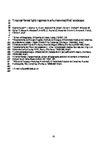Tropical forest light regimes in a human-modified landscape
| dc.contributor.author | Fauset, S | |
| dc.contributor.author | Gloor, MU | |
| dc.contributor.author | Aidar, MPM | |
| dc.contributor.author | Freitas, HC | |
| dc.contributor.author | Fyllas, NM | |
| dc.contributor.author | Marabesi, MA | |
| dc.contributor.author | Rochelle, ALC | |
| dc.contributor.author | Shenkin, A | |
| dc.contributor.author | Vieira, SA | |
| dc.contributor.author | Joly, CA | |
| dc.date.accessioned | 2018-11-26T15:07:54Z | |
| dc.date.available | 2018-11-26T15:07:54Z | |
| dc.date.issued | 2017-11 | |
| dc.identifier.issn | 2150-8925 | |
| dc.identifier.issn | 2150-8925 | |
| dc.identifier.other | ARTN e02002 | |
| dc.identifier.uri | http://hdl.handle.net/10026.1/12896 | |
| dc.description.abstract |
<jats:title>Abstract</jats:title><jats:p>Light is the key energy input for all vegetated systems. Forest light regimes are complex, with the vertical pattern of light within canopies influenced by forest structure. Human disturbances in tropical forests impact forest structure and hence may influence the light environment and thus competitiveness of different trees. In this study, we measured vertical diffuse light profiles along a gradient of anthropogenic disturbance, sampling intact, logged, secondary, and fragmented sites in the biodiversity hot spot of the Atlantic forest, southeast Brazil, using photosynthetically active radiation sensors and a novel approach with estimations of vertical light profiles from hemispherical photographs. Our results show clear differences in vertical light profiles with disturbance: Fragmented forests are characterized by rapid light extinction within their low canopies, while the profiles in logged forests show high heterogeneity and high light in the mid‐canopy despite decades of recovery. The secondary forest showed similar light profiles to intact forest, but with a lower canopy height. We also show that in some cases the upper canopy layer and heavy liana infestations can severely limit light penetration. Light extinction with height above the ground and depth below the canopy top was highest in fragmented forest and negatively correlated with canopy height. The novel, inexpensive, and rapid methods described here can be applied to other sites to quantify rarely measured vertical light profiles.</jats:p> | |
| dc.format.extent | e02002-e02002 | |
| dc.format.medium | Print-Electronic | |
| dc.language | en | |
| dc.language.iso | en | |
| dc.publisher | Ecological Society of America | |
| dc.subject | Atlantic forest | |
| dc.subject | Brazil | |
| dc.subject | canopy | |
| dc.subject | degraded | |
| dc.subject | disturbance | |
| dc.subject | extinction coefficient | |
| dc.subject | fragment | |
| dc.subject | montane | |
| dc.subject | radiation | |
| dc.subject | secondary | |
| dc.subject | structure | |
| dc.subject | vertical profile | |
| dc.title | Tropical forest light regimes in a human-modified landscape | |
| dc.type | journal-article | |
| dc.type | Journal Article | |
| plymouth.author-url | https://www.webofscience.com/api/gateway?GWVersion=2&SrcApp=PARTNER_APP&SrcAuth=LinksAMR&KeyUT=WOS:000417330000017&DestLinkType=FullRecord&DestApp=ALL_WOS&UsrCustomerID=11bb513d99f797142bcfeffcc58ea008 | |
| plymouth.issue | 11 | |
| plymouth.volume | 8 | |
| plymouth.publication-status | Published | |
| plymouth.journal | Ecosphere | |
| dc.identifier.doi | 10.1002/ecs2.2002 | |
| plymouth.organisational-group | /Plymouth | |
| plymouth.organisational-group | /Plymouth/Faculty of Science and Engineering | |
| plymouth.organisational-group | /Plymouth/Faculty of Science and Engineering/School of Geography, Earth and Environmental Sciences | |
| plymouth.organisational-group | /Plymouth/REF 2021 Researchers by UoA | |
| plymouth.organisational-group | /Plymouth/REF 2021 Researchers by UoA/UoA06 Agriculture, Veterinary and Food Science | |
| plymouth.organisational-group | /Plymouth/Users by role | |
| plymouth.organisational-group | /Plymouth/Users by role/Academics | |
| dc.publisher.place | United States | |
| dcterms.dateAccepted | 2017-10-02 | |
| dc.identifier.eissn | 2150-8925 | |
| dc.rights.embargoperiod | Not known | |
| rioxxterms.versionofrecord | 10.1002/ecs2.2002 | |
| rioxxterms.licenseref.uri | http://www.rioxx.net/licenses/all-rights-reserved | |
| rioxxterms.licenseref.startdate | 2017-11 | |
| rioxxterms.type | Journal Article/Review |


